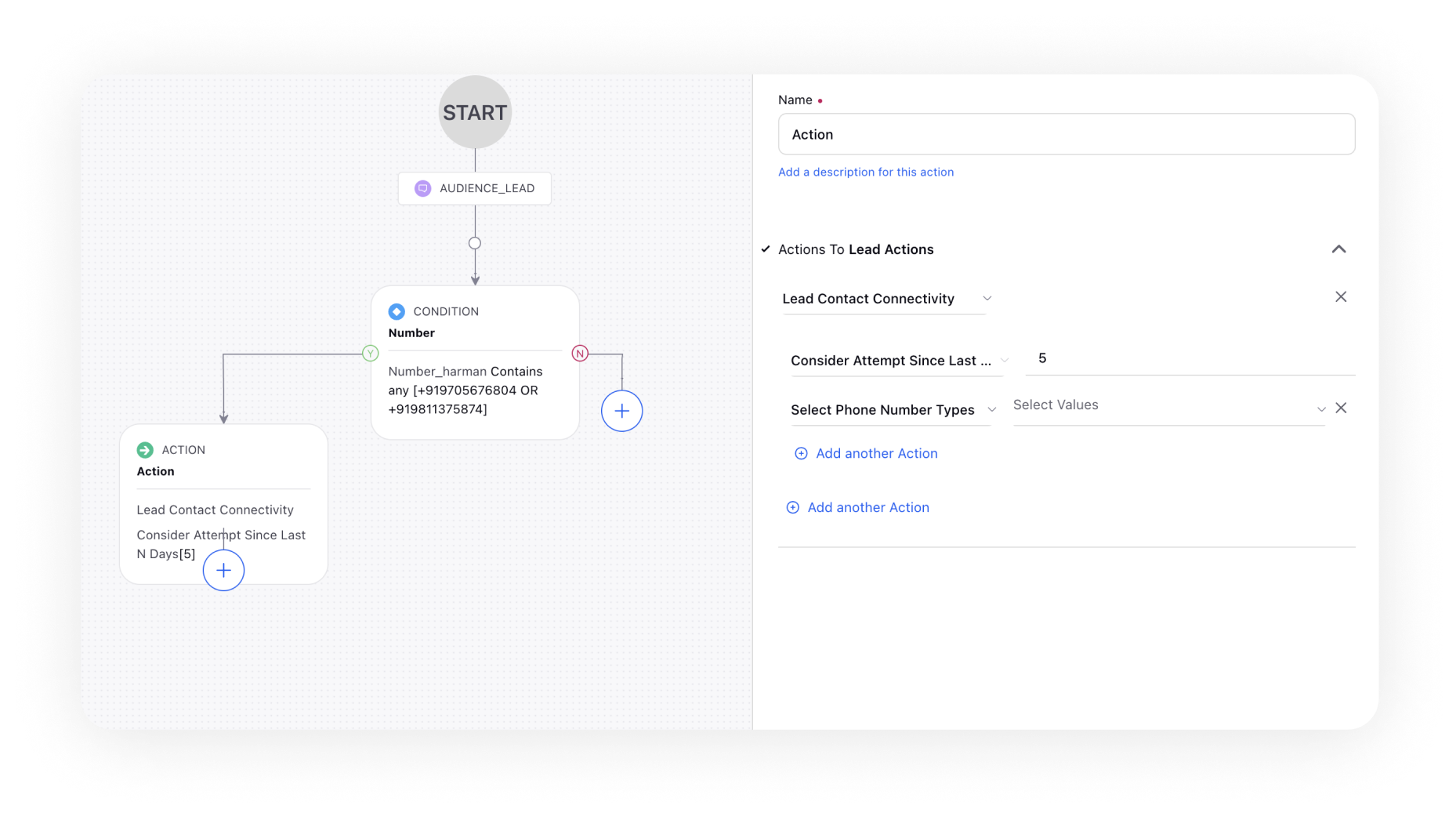Lead Rules (Lead Scoring Based on Contact Intensity)
Updated
This feature significantly enhances capabilities upon lead ingestion, offering various functionalities for diverse business needs.
Key Highlights:
External CRM Integration: Retrieve lead metadata from external CRM systems via APIs to enhance data accessibility within Sprinklr.
Custom Attribute Calculations: Create new attributes using existing lead data and Sprinklr metrics for tailored insights.
Contact Intensity Calculation: Determine lead contact intensity, optimizing lead dialing for higher connectivity percentages.
The feature seamlessly integrates with your lead scoring models, allowing for external model creation and computation of lead scores within Sprinklr.
Enablement Note: To learn more about getting this capability enabled, please work with your Success Manager. |
Lead Scoring Based on Contact Intensity
Presently, customer records are selected randomly based on the campaign strategy and the availability of callable records. However, this existing process lacks a systematic approach to considering contact preferences associated with each customer record. This deficiency makes it challenging to optimize customer calls based on their individual preferences.
Contact Intensity quantifies how frequently a contact answers calls. The higher the frequency, the higher the intensity. To streamline outbound calls, contacts with high intensity are prioritized. Each contact is scored based on its intensity, where a higher score denotes a more important lead or customer. This scoring mechanism enables the prioritization of important leads by leveraging historical records, as opposed to the current practice of random calling based on campaign strategy and callable records.

Attributes Defining Contact Scoring
Contact scoring is determined by the following attributes:
Rolling Period: This defines the timeframe for which data is analyzed. The period, denoted in days (n), cannot exceed 90 days. It establishes the context within which contact scoring is evaluated.
Contact Intensity: Calculated as (Number of connects / Number of attempts) * 100 in the last n days. This metric is specific to an individual phone number. It quantifies how frequently a particular contact answers calls, providing insights into their engagement patterns.
Lead Intensity: For a specific lead that may encompass multiple contact numbers (ph1, ph2, ..., phm). Lead Intensity is calculated as the sum of individual Contact Intensities divided by the total number of contacts (m) in that particular lead. This attribute offers a holistic view of engagement across all contact numbers associated with a lead.
These attributes collectively form the foundation for an effective contact scoring system, enabling a nuanced understanding of engagement patterns at both the contact and lead levels.
Dynamic Lead Scoring and Segmentation
To optimize customer engagement, specific attributes for lead events and lead levels are calculated immediately upon data ingestion into the system. The key components of this enhancement include:
Bucketing Based on Contact Intensity: Contact Intensity is categorized into buckets such as 90-100, 70-90, 50-70, etc. Each bucket is assigned a rank based on the following scheme:
= 90: Rank 1
= 80 and < 90: Rank 2
... and so on.
Reporting and Displaying on RM Console: Contact Intensity is made available against individual customer phone numbers, along with Lead Intensity and Lead Intensity Ranking. This information is accessible in reports and prominently displayed on the RM Console for convenient callback scheduling.
Filtration and Sorting Capabilities: "Lead Intensity" and "Lead Intensity ranking" are seamlessly integrated into various dashboards, providing users with the flexibility to filter and sort leads dynamically based on these insightful metrics. This feature enables:
Creating segments and initiating calls in order of higher Lead Intensity.
Re-churning segments with higher Lead Intensity for targeted outreach.
Sorting criteria to prioritize leads and efficiently call those with higher Lead Intensity.
This comprehensive enhancement ensures a data-driven approach to customer engagement, allowing for precise segmentation, strategic callback scheduling, and efficient lead prioritization.